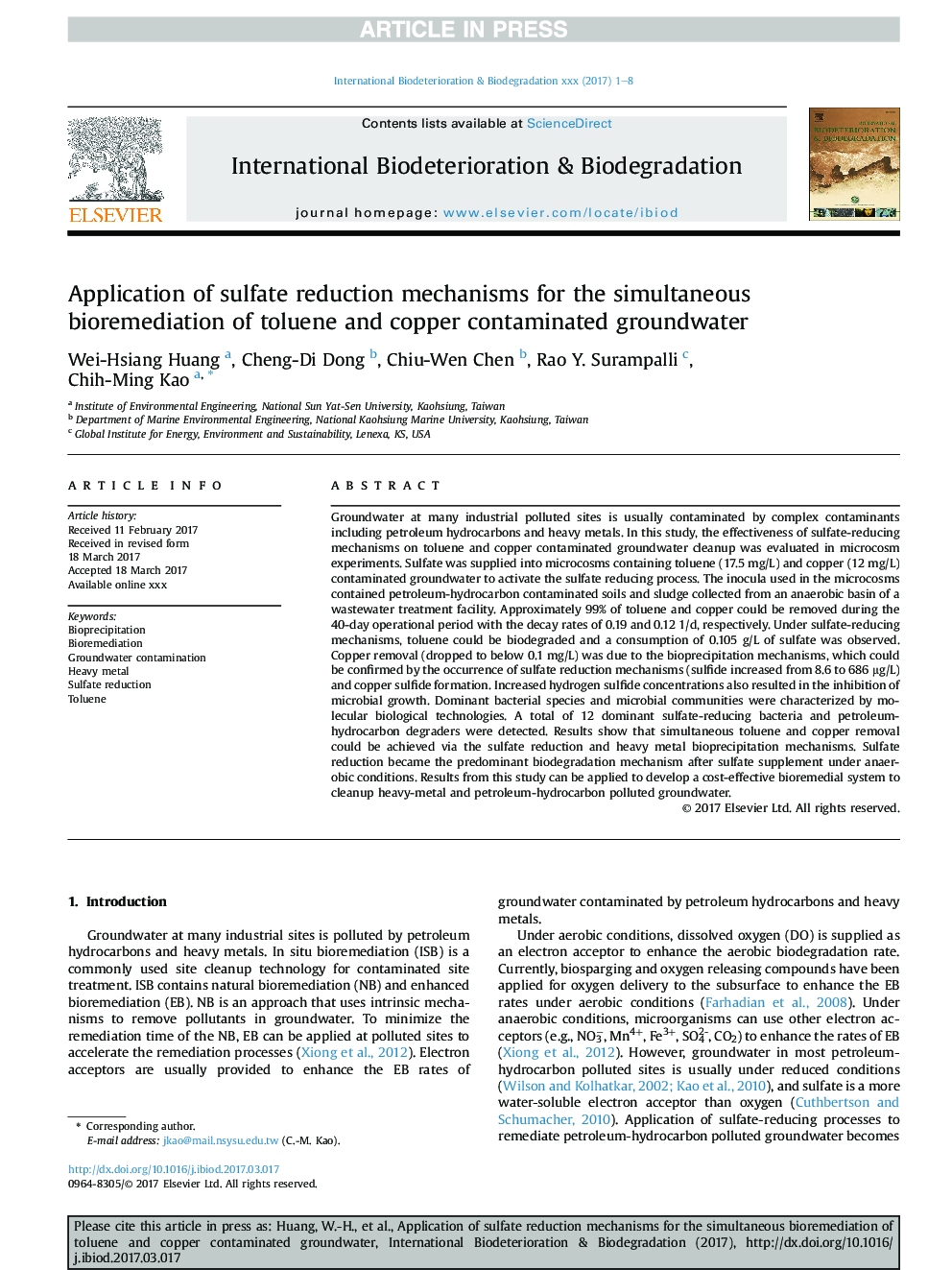| کد مقاله | کد نشریه | سال انتشار | مقاله انگلیسی | نسخه تمام متن |
|---|---|---|---|---|
| 5740338 | 1616293 | 2017 | 8 صفحه PDF | دانلود رایگان |
عنوان انگلیسی مقاله ISI
Application of sulfate reduction mechanisms for the simultaneous bioremediation of toluene and copper contaminated groundwater
ترجمه فارسی عنوان
استفاده از مکانیسم های کاهش سولفات برای بهبود زیست محیطی همزمان آبهای زیرزمینی آلوده به تولوئن و مس
دانلود مقاله + سفارش ترجمه
دانلود مقاله ISI انگلیسی
رایگان برای ایرانیان
کلمات کلیدی
موضوعات مرتبط
علوم زیستی و بیوفناوری
علوم محیط زیست
علوم زیست محیطی (عمومی)
چکیده انگلیسی
Groundwater at many industrial polluted sites is usually contaminated by complex contaminants including petroleum hydrocarbons and heavy metals. In this study, the effectiveness of sulfate-reducing mechanisms on toluene and copper contaminated groundwater cleanup was evaluated in microcosm experiments. Sulfate was supplied into microcosms containing toluene (17.5 mg/L) and copper (12 mg/L) contaminated groundwater to activate the sulfate reducing process. The inocula used in the microcosms contained petroleum-hydrocarbon contaminated soils and sludge collected from an anaerobic basin of a wastewater treatment facility. Approximately 99% of toluene and copper could be removed during the 40-day operational period with the decay rates of 0.19 and 0.12 1/d, respectively. Under sulfate-reducing mechanisms, toluene could be biodegraded and a consumption of 0.105 g/L of sulfate was observed. Copper removal (dropped to below 0.1 mg/L) was due to the bioprecipitation mechanisms, which could be confirmed by the occurrence of sulfate reduction mechanisms (sulfide increased from 8.6 to 686 μg/L) and copper sulfide formation. Increased hydrogen sulfide concentrations also resulted in the inhibition of microbial growth. Dominant bacterial species and microbial communities were characterized by molecular biological technologies. A total of 12 dominant sulfate-reducing bacteria and petroleum-hydrocarbon degraders were detected. Results show that simultaneous toluene and copper removal could be achieved via the sulfate reduction and heavy metal bioprecipitation mechanisms. Sulfate reduction became the predominant biodegradation mechanism after sulfate supplement under anaerobic conditions. Results from this study can be applied to develop a cost-effective bioremedial system to cleanup heavy-metal and petroleum-hydrocarbon polluted groundwater.
ناشر
Database: Elsevier - ScienceDirect (ساینس دایرکت)
Journal: International Biodeterioration & Biodegradation - Volume 124, October 2017, Pages 215-222
Journal: International Biodeterioration & Biodegradation - Volume 124, October 2017, Pages 215-222
نویسندگان
Wei-Hsiang Huang, Cheng-Di Dong, Chiu-Wen Chen, Rao Y. Surampalli, Chih-Ming Kao,
